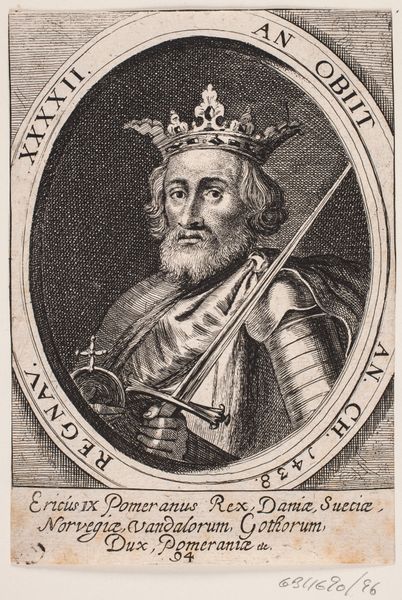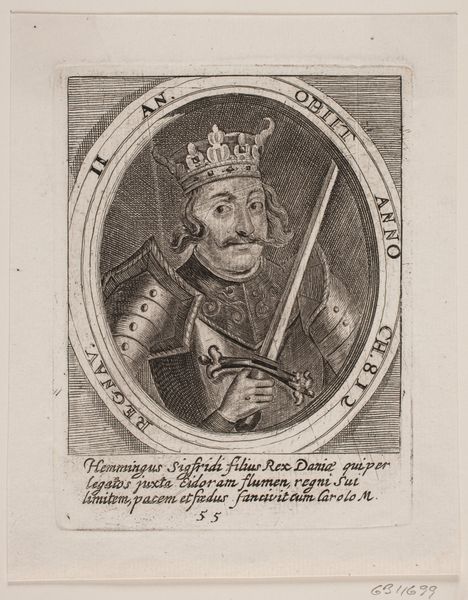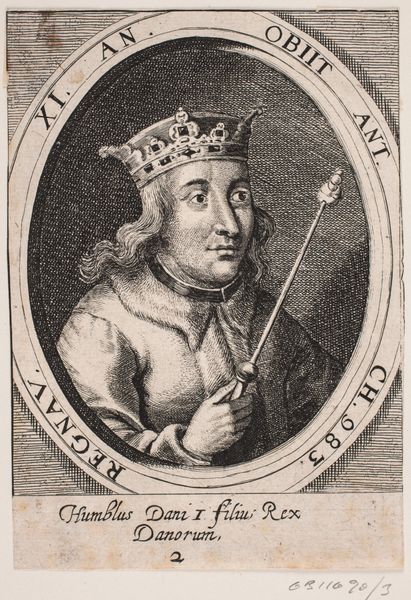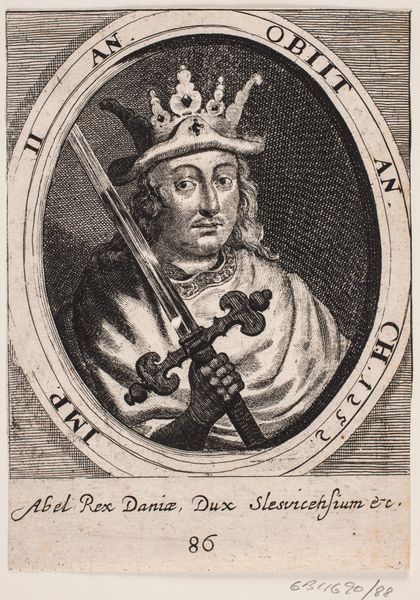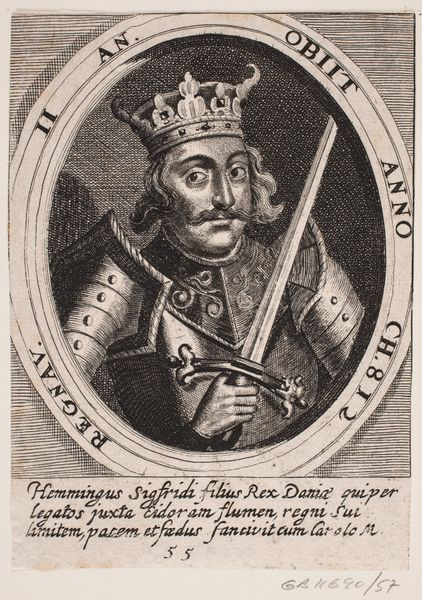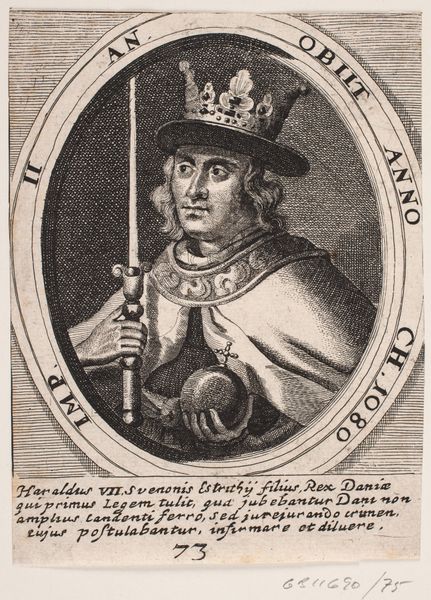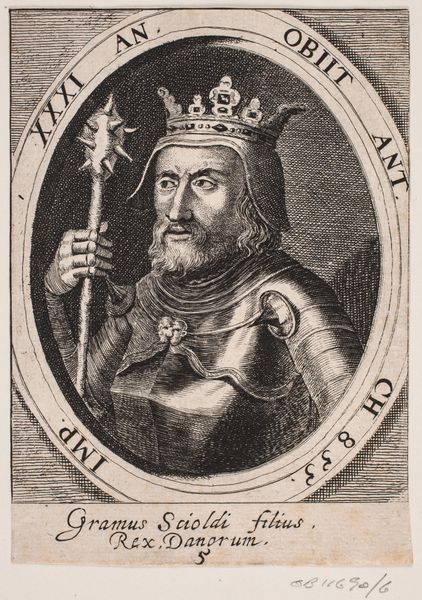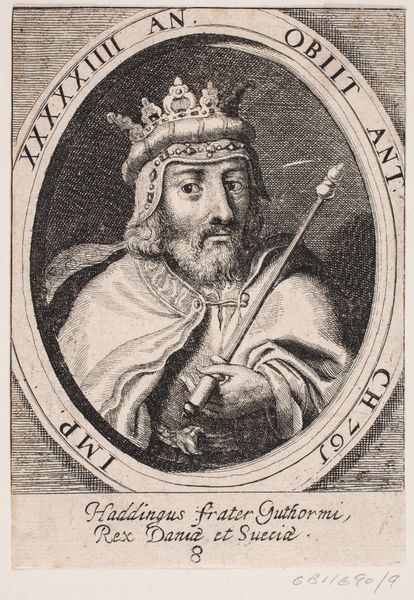
print, engraving
#
portrait
#
baroque
# print
#
pencil drawing
#
history-painting
#
engraving
Dimensions: 140 mm (height) x 100 mm (width) (bladmaal)
Editor: Here we have an engraving from 1646, titled *Christian I*, and it’s currently housed in the SMK, the National Gallery of Denmark. There’s something quite regal, but also slightly stiff, about the subject...what strikes you when you look at this piece? Curator: What interests me immediately is the construction of power visible here. How does this portrait, commissioned during or shortly after Christian's reign, contribute to the narrative of his authority? Consider the context: this print circulated within a society acutely aware of lineage and the divine right of kings. Editor: Right, it's all very deliberate, isn’t it? The crown, the scepter... it's projecting authority. Curator: Precisely. And notice the inscriptions. The print is a strategic piece of propaganda designed to communicate Christian I's legitimacy across multiple kingdoms and territories. This was vital for maintaining political stability. Editor: So, it's less about capturing a likeness and more about conveying an idea of kingship? Curator: Exactly. Portraits like these acted as visual shorthand for complex political realities. They shaped public perception and reinforced the existing social hierarchy. How do you think viewers at the time might have reacted to this image versus now? Editor: I suppose now, we see it more as a historical document, a relic of a bygone era. They might have felt the immediate pressure of his authority through the image. Thanks; that's insightful! Curator: My pleasure. Examining such artwork is key to unpacking the politics embedded within seemingly straightforward representations of power. The image then speaks volumes beyond simply presenting an individual.
Comments
No comments
Be the first to comment and join the conversation on the ultimate creative platform.


